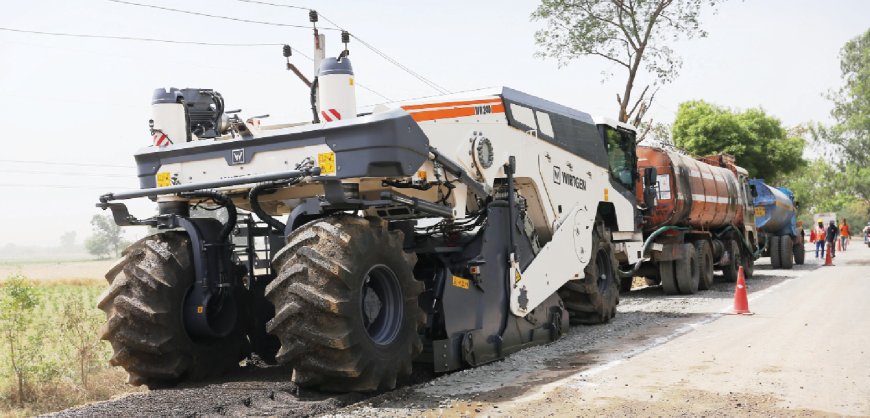Wirtgen Cold Recycler & Soil Stabilizer WR 240 Quick Fix, Faster Turnaround and Proven Result
WIRTGEN Cold Recycler & Soil Stabilizer WR 240 demonstrated excellent turnaround time, rehabilitating a 22 Km road near Hapur, UP, making roads operational in a record two and a half hours. Roads are exposed to tremendous loads and are in

WIRTGEN Cold Recycler & Soil Stabilizer WR 240 demonstrated excellent turnaround time, rehabilitating a 22 Km road near Hapur, UP, making roads operational in a record two and a half hours.
Roads are exposed to tremendous loads and are in need of constant overhaul from time to time. However upgrading or extending the existing road is time consuming and involves a cost. This is where WIRTGEN stepped in to rehabilitate the country road between Hapur and Kithore, one of the most important links in the Hapur district, which was in poor condition with potholes, cracks and ruts, and degraded asphalt pavement with the economical and resource-saving cold recycling method.
Hapur Project Process
Increasing car and lorry traffic on roadways cause structural damage to individual layers of asphalt carriageways, compromising their load-bearing capacity. These weak aspects were addressed by WIRTGEN in the Hapur project with a proven methodology wherein the WIRTGEN (WR 240) pave train mills and granulates the damaged asphalt layers, binds the material again by adding binding agent, compacts it and then directly re-paves it, which is referred to as an ‘in situ’ method (performed in place).
The WR 240 is equipped with the new DURAFORCE milling and mixing rotor, which thoroughly mixes the damaged layers comprising of the asphalt surface course, the binder and base courses along with the pre-spread cement. Further, water is added in a variable mixing chamber and the material is re-deposited in it. A grader then takes care of the profiling and various HAMM rollers – in the Hapur project, a 311 D compactor and an HD 99 tandem roller – compacted the new cold recycled layer. With its new surfacing, the recycled road has a high bearing capacity and a long service life. In the final step, a conventional surface course is usually paved on top as a wearing course. This process is economical, saves time and minimizes impact on the environment. The cold recycling process is a proven process worldwide and is an excellent alternative to traditional methods. Another important advantage of the cold recycling method is the fast turnaround. In most cases, there is no need for a complete closure of the road.
The machines in the WR series are ideally suited to varied applications in all performance ranges, from recycling thin asphalt layers on quiet minor roads to recycling up to 250mm-thick asphalt layers on heavily travelled motorways.
The Binding Advantage
Many road construction companies are unaccustomed to using cement when rehabilitating bituminous asphalt layers. But adding this binding agent is standard practice in cold recycling. Together with the bitumen contained in the damaged pavement, it helps to stabilize the cold recycled layer, making it durable in the long term. Other possible binding agents include bitumen emulsion and foamed bitumen. One material can be dispensed within all cold recycling applications and there is no need to add newly processed aggregate. The method hence conserves resources and is cost-effective in different aspects such as mix lorries need not be provided to transport mix on the job site, reduced fuel consumption and CO2 emissions. In addition, roads need not be blocked to traffic for extended periods and, last but not the least, they need not be shut entirely.
Hits: 93








